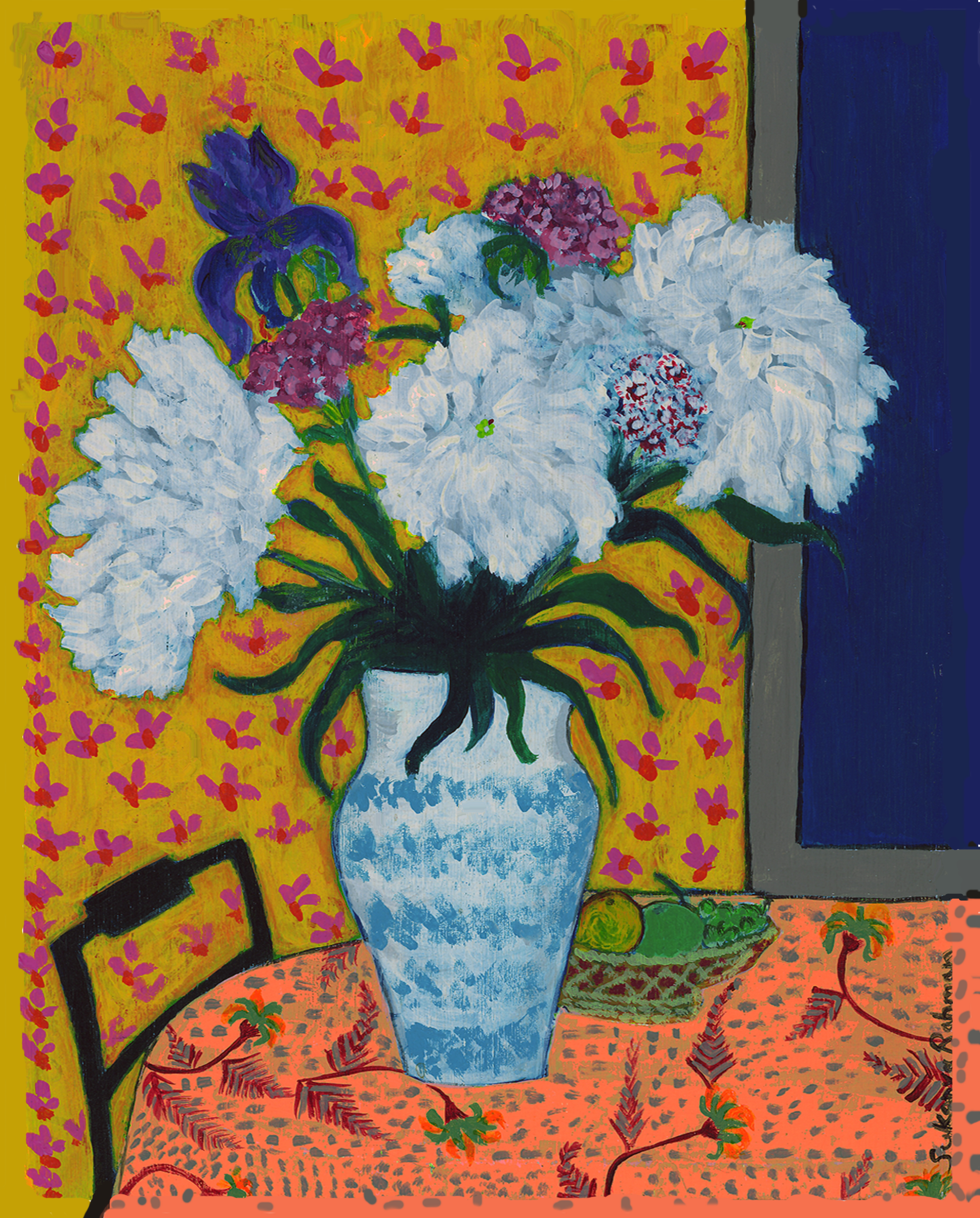As one of the founders of the Blue Rider Group in Munich in 1911 he was at the heart of the most influential and controversial art movements of the 20th century. He was invited by architect Walter Gropius to teach, along with Paul Klee, at the Bauhaus, a school of art, architecture and design dedicated to establishing a modern aesthetic, in Weimar, Germany. The current exhibition draws from three major collections of Kandinsky’s works: the Städtische Galerie im Lenbachhaus und Kunstbau in Munich, the Pompidou Centre in Paris and the Guggenheim in New York as well as loans from important private and public collections.
If you are one of those people who get so emotionally stirred up at a museum you want to roll out a mattress and wake up in the morning surrounded by paintings you absolutely can’t live without, join my club. Even if you aren’t one of those crazies, please, please run to the Guggenheim Museumand get converted. While Kandinsky might not be everyone’s prescription for nirvana, this stunning retrospective of his paintings will not disappoint.
Kandinsky, presented in conjunction with the Guggenheim Museum’s fiftieth anniversary celebrations (it opened 50 years ago on October 21), epitomizes not only the heart and soul of the museum’s permanent collection but was the inspiration for Frank Lloyd Wright’s architectural masterpiece.
Vasily Kandinsky, credited with pioneering abstract painting, was born in Moscow in 1866 to an affluent family. He studied law and economics at Moscow University and completed his doctoral thesis at age 30. A promising career as a professor of law and economics was abandoned after his imagination was fired by one of Claude Monet’s paintings of a Haystack, and a performance of Wagner’s ‘Lohengrin’ at Moscow’s Bolshoi Theatre.
His early stained glass-like paintings resonated with images of his native Russian towns and villages, but over time the images blurred and exploded into vibrant primary colors crisscrossed with dominant slashes of black. Rhythm, music, color, movement, pervaded his work and personal philosophy. “Color” he wrote, “is the keyboard, the eyes are the harmonies, the soul is the piano with many strings. The artist is the hand that plays, touching one key or another, to cause vibrations in the soul.”

VASILY KANDINSKY Colorful Life (Motley Life) (Das bunte Leben), 1907 Tempera on canvas, 130 x 162.5 cm Bayerische Landesbank, on permanent loan to the Städtische Galerie im Lenbachhaus, Munich © 2009 Artist Rights Society (ARS), New York/ADAGP, Paris Photo: Courtesy Städtische Galerie im Lenbachhaus, Munich
An accomplished musician, Kandinsky, was inspired and influenced by the Austrian composer Arnold Schoenberg and the Russian composer Alexander Scriabin, among others. He designated titles to his paintings with musical associations:, Compositions, Impressions and Improvisations. Ever the professor in appearance, with a scientific mind, he was a theoretician, essayist and poet, steeped in spiritual values, mysticism, symbolism and Theosophy. Much like his Russian contemporaries, Stravinsky and Nijinsky in Paris, his early works were greeted with hostility. An exhibition of his abstract works in 1909 received devastating reviews – as did a joint exhibition with Picasso and Braque in 1910.

VASILY KANDINSKY Improvisation 3, 1909 Oil on canvas, 94 x 130 cm Musée national d’art moderne, Centre Pompidou, Paris, Gift of Nina Kandinsky, 1976 © 2009 Artist Rights Society (ARS), New York/ADAGP, Paris Photo: Adam Rzepka, courtesy Collection Centre Pompidou, Paris, diffusion RMN
As one of the founders of the Blue Rider Group in Munich in 1911 he was at the heart of the most influential and controversial art movements of the 20th century. He was invited by architect Walter Gropius to teach, along with Paul Klee, at the Bauhaus, a school of art, architecture and design dedicated to establishing a modern aesthetic, in Weimar, Germany. The current exhibition draws from three major collections of Kandinsky’s works: the Städtische Galerie im Lenbachhaus und Kunstbau in Munich, the Pompidou Centre in Paris and the Guggenheim in New York as well as loans from important private and public collections.
The current exhibition draws from three major collections of Kandinsky’s works: the Städtische Galerie, the im Lenbachhaus und Kunstbau in Munich, the Pompidou Centre in Paris, and the Guggenheim in New York as well as loans from important private and public collections. This retrospective presents his works chronologically, from 1902 to 1942, covering key events that shaped his life and work marked by two world wars, the Russian revolutions, marriages and the death in 1920 of his only child, a son aged two.
Starting at the first level of the raked ramps are the earliest works, snaking up and around the rotunda – the canvases progressing with different phases of his creativity from the representational landscapes, the free flowing abstractions to the more contained biomorphic forms and a paler palette. Displayed in a separate gallery are about 70 works on paper, rarely exhibited due to their fragility. Spanning about 40 years of the artist’s career, these works, incorporating water color, gouache, tempera and India ink have a jewel-like intimacy that brings to mind Paul Klee, and in some pieces the playfulness of Miro
Kandinsky died in Paris in 1944 yet he is of our time: as Roberta Smith wrote in the New York Times, “Kandinsky is so pertinent to the present because he tended to ignore the distinctions between abstraction and representation.”
Above all Kandinsky’s energetic splashes of color, circles, swirls, arcs and off kilter geometric forms create their own symphony spiraling along with Wright’s magnum opus. I urge all of you, who can, to not to miss this monumental homage to two great innovaters of the twentieth century. The exhibition is on view through January 13, 2010 at New York’s Guggenheim Museum

Irene Guggenheim, Vasily Kandinsky, Hilla Rebay, and Solomon R. Guggenheim, Dessau, July 193 Hilla von Rebay Foundation Archive. M0007 Solomon R. Guggenheim Museum Archives, New York. Photograph by Nina Kandinsky.
© Sukanya Rahman (first published in Art Insider 10/19/2009
Copy Right
All Rights Reserved ©Sukanya Rahman 2011
Categories







